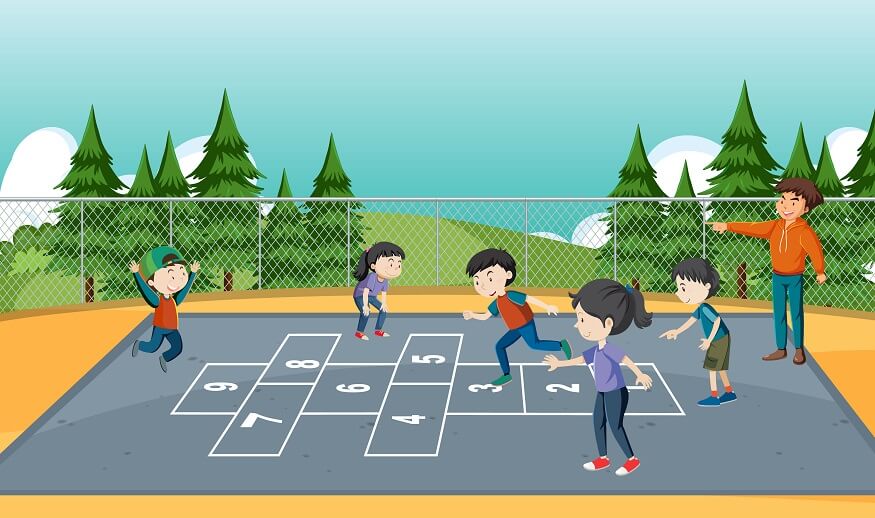The education of our children, which is a transformative process, determines their destiny. Interschool and intraschool are two concepts that are widely used in the field of education. The learning experiences of students are significantly impacted by these terminologies, which stand for various facets of the educational system. We shall examine the difference between interschool and intraschool, illuminating their distinctive qualities and the countless benefits they provide.
1. The Significance of Interschool Activities
Interschool activities play a crucial role in a student’s educational journey by expanding their horizons, providing opportunities to showcase their talents, and fostering camaraderie among students from different schools. These activities involve interactions, competitions, or collaboration difference between interschool and intraschool, and offer students valuable experiences beyond the boundaries of their immediate school community.
A. Expanding Horizons:
Interschool activities provide students with opportunities to engage with peers from other schools and broaden their perspectives. They are exposed to other concepts, cultures, and opinions by interacting with pupils from various backgrounds. They gain a more global perspective because of this exposure, which also fosters open-mindedness and improves their comprehension of the world.
B. Showcasing Talent:
Interschool activities offer a platform for students to display their skills and abilities to a wider audience. Whether it’s participating in sports competitions, academic debates, or cultural exchanges, students can demonstrate their talents and gain recognition beyond their own school. This exposure not only boosts their self-confidence but also motivates them to excel and continuously improve their skills.
C. Fostering Camaraderie:
Interschool activities encourage healthy competition and promote sportsmanship among students. The spirit of friendship and respect that develops between kids from other schools when they compete together is palpable. They get an appreciation for their peers’ accomplishments and a sense of fair play. They acquire a sense of fair play and learn to value their peers’ accomplishments. These interactions contribute to the development of essential social skills and create lasting friendships.
Also Read: What is CBSE Board? – Advantages & Curriculum details
2. Embracing Diversity: The Impact of Interschool Cultural Exchanges
Interschool cultural exchanges are instrumental in fostering a deep appreciation for diverse backgrounds and traditions while promoting empathy and understanding. By bringing together students from various schools, these exchanges offer invaluable opportunities for cultural exploration and nurture a sense of global citizenship.
A. Cultural sharing:
Interschool events provide a forum for the sharing of cultural information and provide students the chance to learn about various beliefs, traditions, and viewpoints. Students obtain insightful understandings of the broad fabric of human experiences through participating in cultural performances, lectures, and conversations. In addition to destroying misconceptions, this exposure fosters tolerance and respect for the diversity of cultures.
B. Global Perspective:
In this linked world, interschool activities provide pupils with a broader perspective on global concerns, difficulties, and potential solutions. Students’ awareness of the world and its complicated connection is expanded by engaging with peers from various schools. To negotiate the complexity of an interconnected society, they acquire a global perspective that emphasises the value of cross-border collaboration and cooperation.
C. Tolerance and Inclusion:
Interschool cultural exchanges lay the foundation for fostering a culture of tolerance and inclusion. As students engage with their counterparts from diverse cultural backgrounds, they learn to embrace and value the richness of diversity. By celebrating differences, respecting individual perspectives, and finding common ground, students develop an inclusive mindset that transcends boundaries. This not only helps to reduce prejudice but also builds bridges of understanding, fostering unity among diverse communities.
Also Read: How to Choose: Best CBSE & ICSE School Near Me
3. Personal Growth and Leadership: The Power of Intraschool Activities
Intraschool activities play a crucial role in personal growth, leadership development, and teamwork among students. These activities provide children the chance to assume responsibility, work with others, and gain important life skills.
A. Leadership Development:
Intraschool activities provide platforms for students to assume leadership roles and responsibilities. Students gain crucial abilities including decision-making, problem-solving, and effective communication through planning events, managing teams, or filling other leadership roles. These experiences cultivate their leadership potential and prepare them for future challenges.
B. Teamwork and Collaboration:
Intraschool activities foster teamwork and collaboration among students. Whether it’s working together on group projects, organising school events, or participating in team-based activities, students learn the value of cooperation, effective communication, and the collective pursuit of goals. These experiences enhance their ability to work collaboratively with diverse individuals and contribute to a harmonious school environment.
C. Skill Enhancement:
Intraschool activities offer students opportunities to develop and refine their skills in various domains. These activities offer a targeted and encouraging atmosphere for skill improvement, whether it’s developing their creative ability, physical prowess, or intellectual brilliance. Teachers, mentors, and coaches can offer advice to students so they can develop to their greatest potential in the areas of interest they choose.
Also Read: The CBSE Board: Understand what it offers
4. Integrating Interschool and Intraschool Activities: A Holistic Approach to Education
Integrating both interschool and intraschool difference is crucial for providing a well-rounded education. A holistic learning experience that promotes academic success, personal development, and community building may be developed in schools by combining a variety of these activities.
A. Complementary Nature:
Interschool and intraschool activities complement each other, contributing to a comprehensive educational experience. Interschool activities provide exposure to external competitions, cultural exchanges, and diverse perspectives, while intraschool activities offer a supportive and tailored environment for personal growth, skill development, and a sense of belonging.
B. Academic Excellence:
By including interschool activities, schools provide students the chance to push themselves and succeed in competitive settings. Contrarily, intraschool activities foster a space where students may concentrate on their unique abilities and passions, enabling a deeper investigation and mastery of certain subjects or skills.
C. Community Building:
Both interschool and intraschool activities contribute to building a strong sense of community among students. Interschool activities foster connections beyond the immediate school community, promoting collaboration, and encouraging friendships with peers from different backgrounds. Intraschool activities strengthen the bonds within the school community, promoting unity, support, and a shared sense of pride.
Also Read: CBSE vs ICSE: The Difference Between CBSE and ICSE Board
Conclusion:
A well-rounded educational system must include both interschool and intraschool activities. Activities between schools enhance students’ perspectives, promote cultural understanding, and forge friendships between pupils from other institutions. Through intraschool activities, students may enhance their skills, their sense of self, and their feeling of community inside the school. Schools provide a full learning experience that encourages academic performance, personal growth, and community building by mixing both types of activities. With this strategy, students are empowered to flourish, obtain a wider perspective, acquire necessary skills, and actively participate in a varied and interconnected world.
At Euroschool, we recognise the importance of understanding the distinctions between interschool and intraschool activities. Interschool activities involve interactions, competitions, or collaborations between different schools, offering students opportunities to engage with peers from other educational institutions. On the other hand, intraschool activities occur within a single school, providing students with tailored opportunities for personal growth and fostering a sense of belonging within their school community. Both types of activities play a crucial role in a well-rounded education, promoting exposure to diverse perspectives and talents while nurturing individual strengths and building strong school communities. At Euroschool, we strive to incorporate a balanced mix of interschool and intraschool difference to provide our students with a comprehensive and enriching learning experience.










